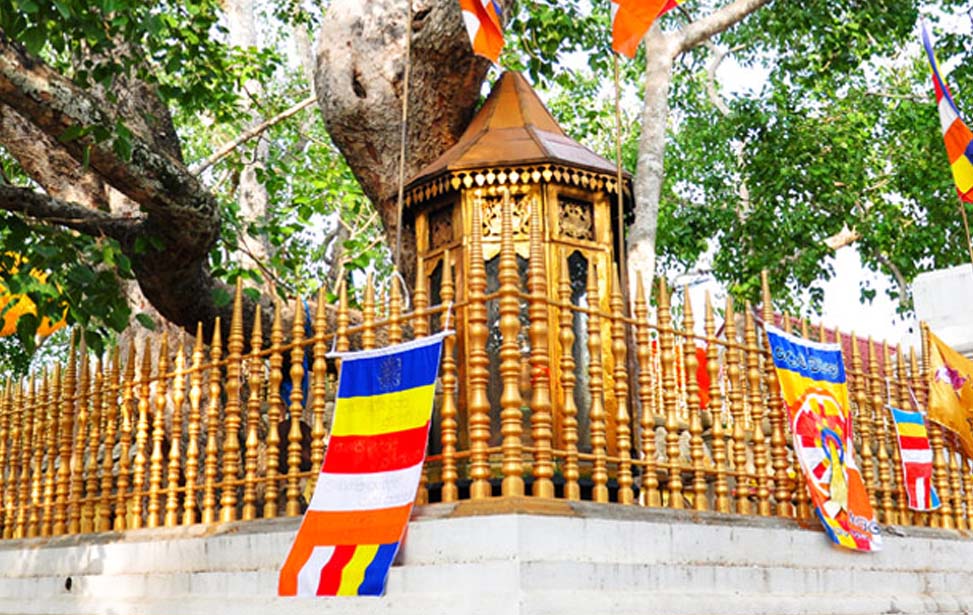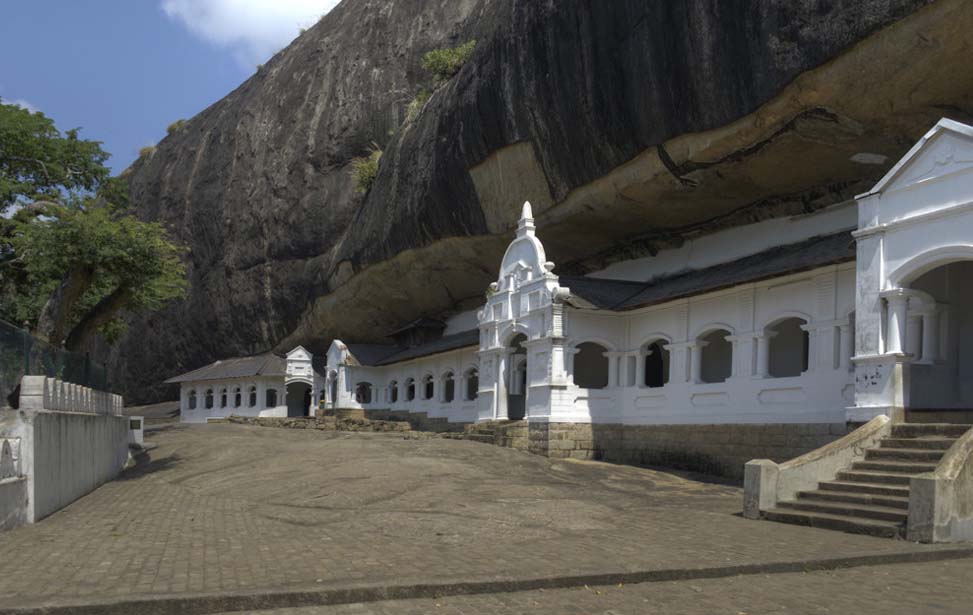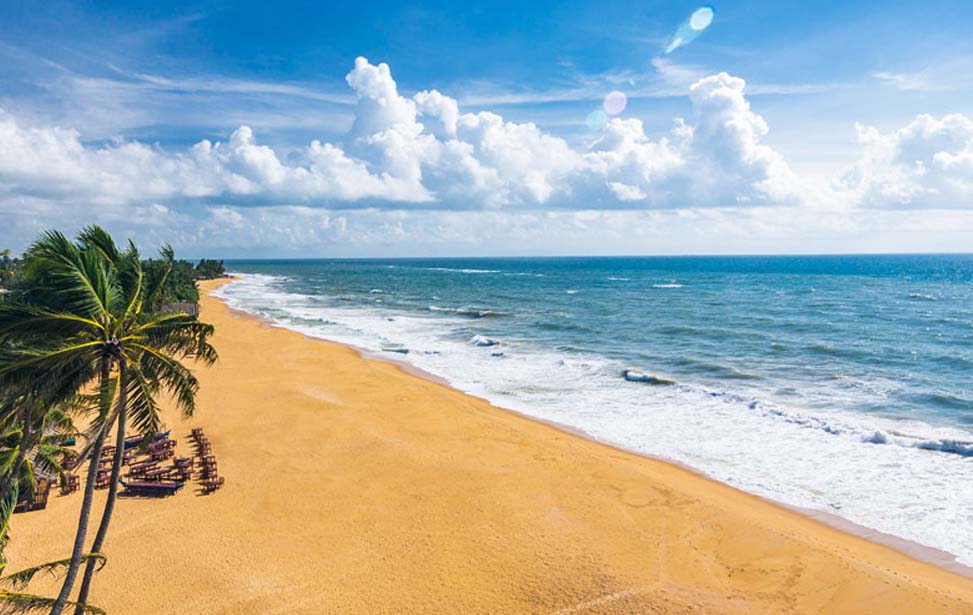

Galle Fort
Galle Fort, in the Bay of Galle on the southwest coast of Sri Lanka, was built first in 1588 by the Portuguese, then extensively fortified by the Dutch during the 17th century from 1649 onwards. It is a historical, archaeological and architectural heritage monument, which even after more than 423 years maintains a polished appearance, due to extensive reconstruction work done by Archaeological Department of Sri Lanka.

Galle Lighthouse
Galle Lighthouse (also known as Pointe de Galle Light) is an onshore Lighthouse in Galle, Sri Lanka and is operated and maintained by the Sri Lanka Ports Authority.This is Sri Lanka's oldest light station dating back to 1848, but the original 24.5-metre-high (80 ft) lighthouse built by the British was located about 100 metres (330 ft) from the current site; however, it was destroyed by fire in 1934. The existing 26.5-metre-high (87 ft) lighthouse was erected here in 1939.The original light was furnished with a glass prism lens floating in a bath of mercury (to reduce friction) and was powered by a weight driven machine.

National Museum of Galle
The National Museum of Galle is one of the national museums of Sri Lanka. It is located in the oldest remaining Dutch building in the Galle fort, Galle, a single storey colonnaded Dutch building built in 1656 as the commissariat store for the Dutch garrison at the fort. It subsequently served as a billiards room for the adjoining New Oriental Hotel (now the Amangalla Hotel). The building was renovated by the Department of National Museums and opened on 31 March 1986.

National Maritime Museum
The National Maritime Museum in Galle, Sri Lanka is situated within Galle Fort. It was first opened to the public on 9 May 1992 and is located in a 1671 Dutch Warehouse above the Old Gate of Galle Fort. Whilst the building housing the museum survived the impact of the 26 December 2004 Tsunami, the adjoining UNESCO Maritime Archaeology Unit was completely destroyed and all the exhibitions were flood damaged[1] and the majority of maritime archeological artifacts were lost. Under Sri Lanka – Netherlands Cultural Co-operation Program, the Royal Government of Netherlands provided financial assistance for reconstruction of the Maritime Museum. After 3 years period of reconstruction, the Maritime Museum was re-opened to the public.

Galle Clock Tower
The Galle Clock Tower (or Anthonisz Memorial Clock Tower) is located within the Galle Fort in Galle, Sri Lanka. The Clock Tower is a popular landmark and overlooks the central Moon Bastion, on the site of the former guard room. The Clock Tower was constructed in 1883, paid for through public subscriptions by the people of Galle, in recognition of Dr. P. D. Anthonisz. The clock itself was the sole gift of a grateful patient, Mudaliyar Samson de Abrew Rajapakse.

Martin Wickramasinghe Museum
The house in which Martin Wickramasinghe was born has inspired the Martin Wickramasinghe Trust to established a Folk Museum Complex, surrounded by a restored ecosystem planted with hundreds of varieties of indigenous trees and shrubs in which bird life abounds. The house and the surroundings brings to life a little part of the Koggala which is so vividly depicted in Wickramasinghe’s writings. Wickramasinghe’s house miraculously escaped the fate of others in his village. The story goes that this simple house with its subdued architecture caught the eye of a female Air Force officer, and she made it her residence during the military occupation of the area, ensuring its preservation.
-
 Anuradhapura
Anuradhapura
-
 Kandy
Kandy
-
 Adam's Peak
Adam's Peak
-
 Sigiriya
Sigiriya
-
 Dambulla
Dambulla
-
 Polonnaruwa
Polonnaruwa
-
 Nuwara Eliya
Nuwara Eliya
-
 Yapahuwa
Yapahuwa
-
 Galle
Galle
-
 Kelaniya
Kelaniya
-
 Jaffna
Jaffna
-
 Mihinthalaya
Mihinthalaya
-
 Colombo
Colombo
-
 Trincomalee
Trincomalee
-
 Yala Park
Yala Park
-
 Udawalawa
Udawalawa
-
 Minneriya
Minneriya
-
 Wilpaththu
Wilpaththu
-
 Kumana
Kumana
-
 Wasgamuwa
Wasgamuwa
-
 Bundala
Bundala
-
 Pigeon Island
Pigeon Island
-
 Peradeniya
Peradeniya
-
 Hakgala
Hakgala
-
 Seethawaka
Seethawaka
-
 Unawatuna
Unawatuna
-
 Hikkaduwa
Hikkaduwa
-
 Arugam Bay
Arugam Bay
-
 Nilaveli
Nilaveli
-
 Beruwala
Beruwala
-
 Thangalle
Thangalle
-
 Mount Lavinia
Mount Lavinia
-
 Negombo Beach
Negombo Beach
-
 Dunhida Ella
Dunhida Ella
-
 Diyaluma Ella
Diyaluma Ella
-
 Ramboda Ella
Ramboda Ella
-
 Bopath Ella
Bopath Ella
-
 Ravana Ella
Ravana Ella
-
 Kirindi Ella
Kirindi Ella
-
 Lovers Leap
Lovers Leap


